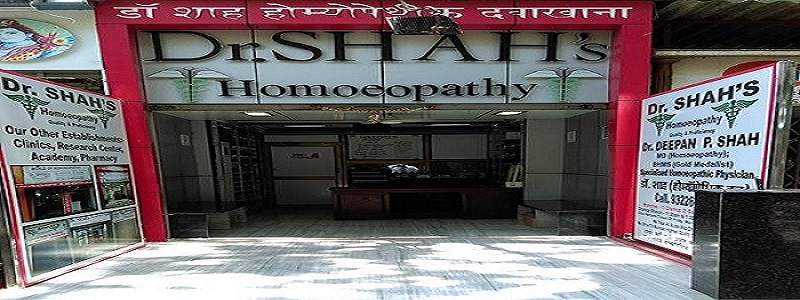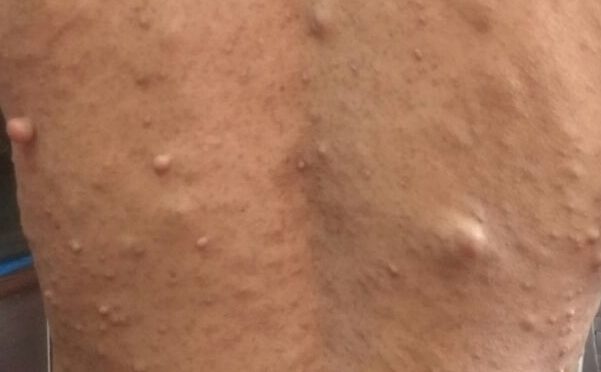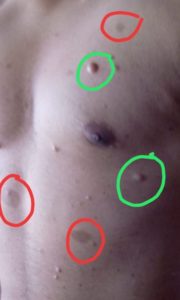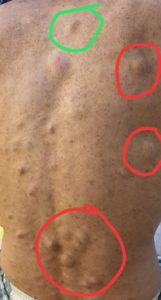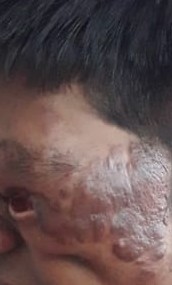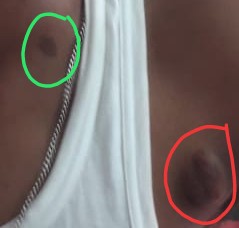Our spine is classified into cervical, thoracic, lumbar and sacral regions.
Cervical Spondylosis is condition where in vertebra and intervertebral discs of cervical region undergoes degeneration.
It is characterised by thinning of intervertebral discs, reduced intervertebral space, osteophyte lipping, spurs formations, herniation of intervertebral disc, nerve compression etc.
It can also be called osteoarthritis of cervical spine.
CAUSES OF CERVICAL SPONDYLOSIS
This degeneration can be due to various mechanical, immunological, infective, metabolic, genetic, nutritional and age related reasons.
It can be due to one or combination of than one ot the above reasons. Most of the cases are due to ageing and mechanical wear and tear related to abnormal physical exertion and postural habbits.
It is commonly seen in people assuming wrong posture for long hours like lying down with head placed on huge pillow or watching mobile phones or reading books with tilted head for long hours, staying on computer workstation with an arm stretched on mouse or key board for long transfers weight on neck.
When such postural habbits are prolonged for few hours to days its starts inflamatory process in cervival spine and if still prolonged for months to years the prolonged inflamation and mechanical wear and tear results into degeneration of spine.
Many genetic and immune mediated conditions like Rheumatoid arthritis, Ankylosing spondylosis, Systemic Lupus Erythematosus, Psoriatic Arthritis etc may result into prolonged chronic inflamation of spine ingeneral and gradual degeneration of cervical spine as well resulting into cervical spondylosis.
Metabolic reasons like hyperuricemia may result into deposition of monosodium urate monohydrate crystals into joint spaces in cervical spine resulting into subsequent erosion and degeneration of spine causing cervical spndylosis.
With ageing there is depletion of anabolic hormones and other factors required for quick repair process which results into slow repair process compared to daily wear and tear and damages tends to accumulate and gradually resulting into erosion and degeneration of spine.
Nutritional deficiencies arised due to lower intake compared to requirement, resulting into lower calcium vitamin D and many other nutrients which not only slows down the repair process to built up damages but also gives rise to low bone mineral density resulting into erosion and degeneration of vertebral bodies.
SIGNS AND SYMPTOMS OF CERVICAL SPONDYLOSIS
In initial stages it starts with occasional stiffness and pain in neck lasting few minutes to hours after exertion gradually it starts persisting with pain on extreme range of axis of movement of neck then later even on smaller axis or range of motion of neck patient starts feeling stiffness or pain or discomfort in neck
If not taken care the nerves originating from cervical plexus which emerge out from cervical spine they start getting compressed causing myalgia paraesthesia in neck which may radiate to shoulder and extend upto arm and upto tip of fingers.
In severe cases of cervical spondylosis patient may also experience vertigo nausea vomitting complete loss of balance with pain in neck and gastric derangement as concomittant symptoms
COMPLICATIONS OF CERVICAL SPONDYLOSIS
CERVICAL SPONDYLOTIC MYELOPATHY (CSM) – It is caused due injury to spinal cord due to cervical spondylosis.
CERVICAL SPONDYLOTIC RADICULOPATHY – In this the nerve gets pinched and compressed near the nerve root shortly after it leaves spinal cord.
VERTIBROBASILAR INSUFFICIENCY – When vertebral artery which is passing through vertebral formen gets occluded and deprives chondrocytes of intervertebral disc from circulation as a result the die and weaken intervertebral disc and osteophytes starts settling in.
DIAGNOSIS OF CERVICAL SPONDYLOSIS
Cervical Compression Test – When the neck is tilted laterally and applied downward pressure patient feels pain on ipsilateral side in neck or shoulder , its not conclusive but indicative and qualifies case for further radiological investigations
Lhermitte’s Sign – Electrict Shock like pain on flexion of neck
These patients general show reduced range of motion of n
Based on clinical symptoms patient may be sent for X ray for ascertaining the diagnosis.
MRI and CT Scan helps to further find out extent and severity of damage to spine.
Myelography is done with dye injection in spinal cord during CT or X ray for more detailed radiological imaging
Electromyography and Nerve Conduction Test helps to find out involvement of nerve and nerve damage and extent of nerve injury.
TREATMENT FOR CERVICAL SPONDYLOSIS
Guidlines to patients on maintaining correct posture, avoid jerk and strain to secure neck is of utmost importance in management of cervical spondylosis patients.
Proper calcium intake sufficient exposure to sunlight for vitamin D. Increased protein, vitamin B12 and iron intake.
Exercise like pranayam and walk helps stimulate hormone secretion and thus facilitating absorption and assimilation of nutrients required for repair and rebuilding the worn and damaged tissues and to increase bone mineral density.
Mild gentle exercise of neck helps increase local blood flow and keep tissue supple and stimulate its growth and strenght but if not done under proper guidance of qualified physiotherapist it may further injure the already damaged tissue. So if proper qualified physiotherapist is not available to guide its safer bet not to exercise neck region involving cervical spine on your own and giving it complete rest and let it recover on its own while still continueing with walk and pranayam regularly.
HOMEOPATHIC MEDICINES FOR CERVICAL SPONDYLOSIS
CIMICIFUGA RACEMOSA / ACTEA RACEMOSA
RHUS TOXICODENDRONE
ARNICA MONTANA
PLANTAGO MAJOR
HYPERICUM PERFOLIATUM
TUBERCULINUM
BELLADONNA
CALCAREA PHOSPHORICA
BELLIS PERENIS
SILICEA
MEDHORRINUM
